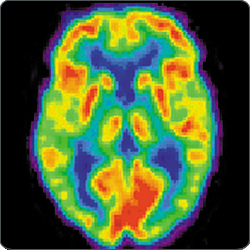MONDAY, 21 JUNE 2010
The brain's right prefrontal cortex is responsible for anticipation and quick reactions to stimuli. This is involved in preparing for an event before it actually occurs. Research at the University of Granada has investigated the impact of damage to the frontal cortex on responses to stimuli. The aspects considered were temporal preparation, the interval between the stimulus and the response and sequential effects on the reaction.The subjects were in three groups: those with damage to the prefrontal cortex, those with damage to the left frontal cortex and basal ganglia circuits and as a control, the healthy individuals. They were shown a sign that both validly and invalidly predicted a stimulus. It was valid when the stimulus followed directly afterwards, but was invalid when it was presented either too early or too late and had little predicting power. This sign was used to test the patients' anticipation.
While the subjects with damage to the prefrontal cortex demonstrated a deficiency in temporal preparation, both of the other groups showed normal preparation. The same result was obtained with regard to the stimulus-response interval; only the group with damage to the prefrontal cortex demonstrated impaired preparation effects. However, normal sequential reactions were conserved in all of the groups.
The study has shown that damage to the right prefrontal cortex impairs intentional anticipation, but unintentional anticipation continues to function. This could give rise to forms of therapy, and the researchers are currently looking into this. They are investigating the dependency of a patient's response speed on intentional anticipation. They hope that providing rhythms, which appeals to unintentional preparation, can improve the patient's temporal preparation.
The results are published in the journal Brain [1].
Written by Ayesha Sengupta

